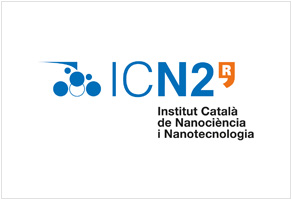Catalan Institute of Nanoscience & Nanotechnology (ICN2)
Contact persons:
Elena Del Corro
The Catalan Institute of Nanoscience and Nanotechnology (ICN2)(www.ICN2.cat), created in 2003, is a research centre with currently about 200 people among researchers, technical support and administration. The research covers new material properties resulting from their nanometric scale; the development of methods for nanofabrication, growth, analysis, characterisation and manipulation of structures of nanometric dimension for nanoelectronics, spintronics, nanophotonics and nanophononics. ICN2 was awarded the coveted label of Excelencia Severo Ochoa by the Spanish Government, acknowledging its research excellence, the first in Spain in Nanoscience. The institute is the home of several ERC award holders and has an active technology transfer department.
Processing platform
Nanomaterials Growth Unit
The main purpose of the Unit is the deposition of thin nanostructured films by laser advanced techniques and the characterisation of structure and microstructure by advanced tools.
Nanofabrication Facility
The Nanofabrication Facility focuses on the design and development of nanofabrication methods and techniques for nanoscience and nanotechnology research and applications. The mission of the facility is to provide high quality services to both internal and external users.
Instrumentation Unit
The Instrumentation Unit focuses on the design, development, improvement and deployment of advanced state-of-the-art instruments for nanoscience and nanotechnology. The main aim is the creation of an integrated scientific and technical platform with a highly qualified multidisciplinary team capable of addressing challenging instrumental projects both for basic nanoscience research as well as for nanotechnology applications.
Biolab Facility
This new facility will provide the ICN2 researchers with a safe and reliable environment to advance in the application of nanotechnology to life sciences and medicine.
Mechanical Workshop Facility
The Facility offers a broad range of custom machining services for the design and fabrication of devices and components for the institute research.
Modelling platform
Characterization platform
Electron Microscopy Unit
The Electron Microscopy Unit focuses on the use of electron microscopy techniques for nanoscience and nanotechnology research and applications. The main aim is to provide scientific technical support to the ICN2 research lines and to neighbouring research centres, as well as developing and implementing novel related techniques. The laboratory has active collaborations with other research institutions and is becoming increasingly involved in European networks.
Photoemission Spectroscopy (XPS&UPS) Facility
ICN2 offers surface characterization by XPS and UPS to analyse the surface chemistry of a material in its unprocessed state or after treatment (fracturing, cutting or scraping in air or UHV to expose the bulk chemistry; ion beam etching to remove surface contamination; heating to study heat-induced changes; exposure to reactive gases or solutions, etc.).
X-Ray Diffraction Facility
X-Ray analysis is used for the study of the crystalline structure of solid materials, either in powder or in compact form, thin film or nanomaterials.
Molecular Spectroscopy and Optical Microscopy Facility
The molecular spectroscopy facility and optical microscopy is equipped with analytical instruments for performing both qualitative and quantitative analysis of chemical materials based on the interaction of electromagnetic radiation with matter.
SQUID Magnetometry Facility
The SQUID is a very sensitive magnetometer based on a superconducting quantum interference device. It integrates a detection system and a precision temperature control unit inside the bore of a high-field superconducting magnet. Common uses of this equipment include field sweeps and hysteresis loops, moment vs. field and moment vs. temperature measurements and field and zero-field cool measurements.




 Minatec – CROMA
Minatec – CROMA